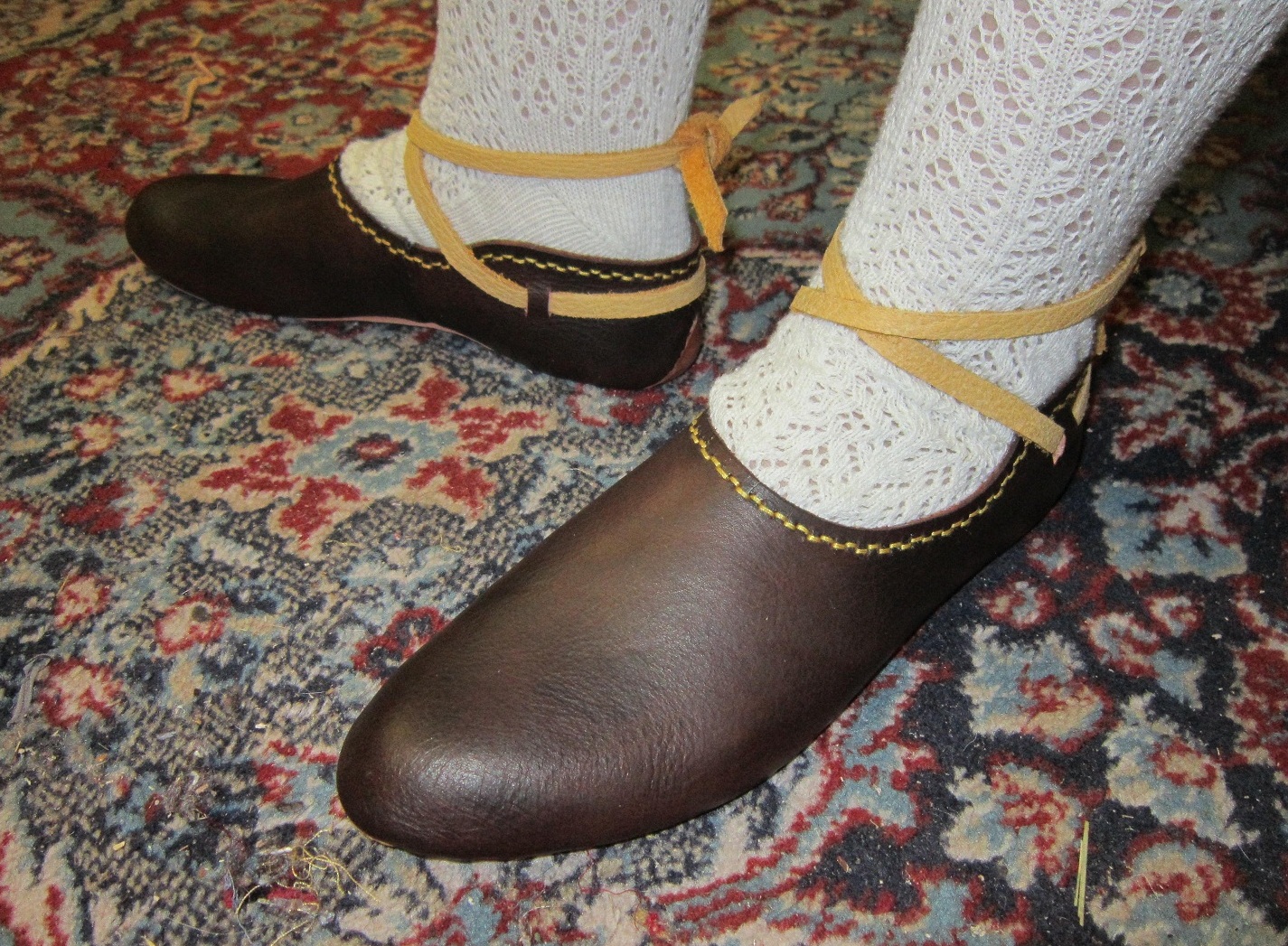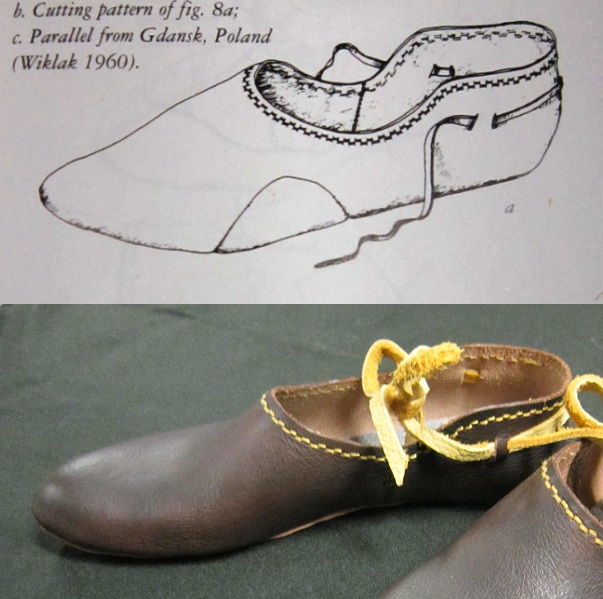I have been meaning to make a pair of viking shoes for the muse, the inspiration closest to my heart, Miss Sarah L. I also have the good fortune to present these in context, on the feet of the recipient as well! I dare say that they make the photo that much more compelling. In any event, these are out of Goubitz, 9th-10th C., from Vlaardingen. This type of decoration was very common on several examples, and there is a similar piece from Gdansk, Poland. This particular piece even had some remnant threads remaining in the leather.
The extant piece is actually a fragment, but with sufficient detail to render a model for us.
From Goubitz’ “Stepping Through Time,” this pattern shows you the conjectured piece and the fragment, but there is a dashed line to indicate to where the material would have extended.
The construction itself is fairly straight forward, and the sole attachment is similar to the pair of Viking ankle boots shown here. The unusual seam in which the stitching does not pass through the edge of the leather but rather forms a tunnel stitch on top of the sole was used up until the heel portion, where it transitions to the more common medieval form of attachment, passing through the edge of the shoe.
Note that the small slits were done prior to closing but after dying. Once the shoe was completed, the last was removed, and the silk thread was stitched in a running stitch, but with each thread doubled up. As a result, there are two rows of thread on the top band and two rows on the bottom.
For kicks and giggles, it’s always interesting to compare the conjectured image to the final product. The primary quibbles I have in my reconstruction are that the curved should have sloped a bit lower and the ornamental bands could have been more closely spaced together. All in all, a fairly close reproduction, and a success in as much as a great deal was learned during the process!





An elegant and comfortable looking shoe. Brilliant.